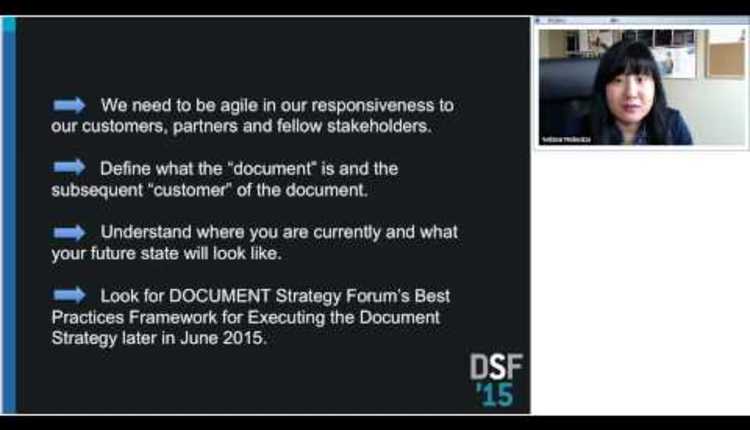
Information technology (IT) professionals involved in the day-to-day of customer communications management know first-hand the pressures of delivering against tight deadlines, dealing with the ongoing change management nightmare and meeting tight service-level agreements (SLAs) imposed by the business.
The good news is that a new breed of CCM tools are emerging with capabilities designed to extend the content management layer out to the business user while integrating seamlessly with your print operations and processes. For every company, such solutions have a powerful impact on time to market and improved customer experience, as well as a savings in cost and effort to meet a company’s CCM goals and deliverables.
Although the value and benefits of these tools might be viewed as a benefit only to the business user, they are designed to add value to IT processes as well.
In the not-so-distant past, companies hired expensive, highly specialized developers to not just program composition templates but also to program the content itself and define the rules in the same code package. Not only that, these developers were responsible for fixing dots, crossing Ts and undoing typos, usually with a change ticket and a full schedule. It was a very expensive and time-consuming use of valuable labor that taxed IT resources and the patience of the business.
For most enterprises today, the first step in any project is to find the right off-the-shelf tools that fast track development and eliminate unnecessary costs. However, enterprise CCM is a bit more complex. While that next best step may well be to begin evaluating how to do composition more efficiently, one must consider how to integrate these specialized content management systems for both digital and print CCM applications with the systems already in place.
Most CCM platforms are designed to integrate seamlessly with established composition tools that can combine externally referenced content and rules with composition logic through the production process. The platform itself should provide an intuitive interface for non-technical users to easily visualize and build out content and rules intended for each touchpoint. It should also enable a high degree of variability to service end consumer recipients with information that is highly relevant and personalized to their needs, ultimately, leading to an improved customer experience
Capabilities often incorporated into these new platforms include the ability to:
The good news is that a new breed of CCM tools are emerging with capabilities designed to extend the content management layer out to the business user while integrating seamlessly with your print operations and processes. For every company, such solutions have a powerful impact on time to market and improved customer experience, as well as a savings in cost and effort to meet a company’s CCM goals and deliverables.
Although the value and benefits of these tools might be viewed as a benefit only to the business user, they are designed to add value to IT processes as well.
In the not-so-distant past, companies hired expensive, highly specialized developers to not just program composition templates but also to program the content itself and define the rules in the same code package. Not only that, these developers were responsible for fixing dots, crossing Ts and undoing typos, usually with a change ticket and a full schedule. It was a very expensive and time-consuming use of valuable labor that taxed IT resources and the patience of the business.
For most enterprises today, the first step in any project is to find the right off-the-shelf tools that fast track development and eliminate unnecessary costs. However, enterprise CCM is a bit more complex. While that next best step may well be to begin evaluating how to do composition more efficiently, one must consider how to integrate these specialized content management systems for both digital and print CCM applications with the systems already in place.
Most CCM platforms are designed to integrate seamlessly with established composition tools that can combine externally referenced content and rules with composition logic through the production process. The platform itself should provide an intuitive interface for non-technical users to easily visualize and build out content and rules intended for each touchpoint. It should also enable a high degree of variability to service end consumer recipients with information that is highly relevant and personalized to their needs, ultimately, leading to an improved customer experience
Capabilities often incorporated into these new platforms include the ability to:
- Promote the re-use of content and rules to approve content prior to production
- Handle versioning of content
- Provide self-service test and proof facilities
- Track and report on who received what messages and when, especially important for auditing purposes
What improvements can your IT team expect with the new breed of CCM tools?
Streamlined content management
Business content is likely your primary source for frequent change in any of your applications, and the new CCM platforms have the ability to separate making those changes from the need to regression test your applications. In addition, the overall size and complexity of your composition template just got a lot more streamlined. The result is greater predictability and reliability in your build-fix cycles as well as streamlining your operational processes. It also means that your ability to meet or exceed SLAs is increased, as you can now eliminate needless regression testing and focus on your core deliverables.
Less expensive resources
Assuming 50% to 70% of the effort in content management is composition, that large percentage of the total hours required can now be performed at a significantly lower hourly rate. In addition, it’s not only less expensive but also easier to find and hire additional content author resources as your workload increases than it is to find qualified and experienced composition developers.
Easier application maintenance
Because the types of changes required are solely content in nature, limited to no regression is required since the application itself does not change, as it did in the old model. Scheduling change now becomes easier, and your SLAs to the business can be easily met—or better, exceeded.
Content reuse
With a purpose-built content management system for touchpoints, re-use is at the core. These tools should provide reusable building blocks, such as shared repositories of pre-approved text and graphic content, pre-defined sets of targeting rules, and even sets of pre-defined styles that carry and enforce your corporate brand standard. Everything within the platform should have the potential to be centrally managed and controlled and available on demand to the applications requiring those shared elements.
Meeting schedules and SLAs, as well as accelerating time to market for your business-critical touchpoints, becomes your calling card. Maintainability is also improved because shared content objects are modified and approved once, and the changes cascade down automatically to all affected touchpoints.
Dual benefits
Even without business user involvement, your IT department can tap into the many advantages inherent in a content management system to help lower your costs, improve your delivery to the business, meet SLAs, maintain applications over time and accelerate time to market for your CCM touchpoints. Your business users may not be ready to take control of their messaging needs quite yet, but when they’re ready, you'll be able to hand over the keys and let them drive with confidence, as equal partners in the CCM value chain.
Nick Romano specializes in business process reengineering for enterprises migrating to new document delivery solutions. His primary expertise is on implementing messaging and personalization strategies, workflows and ROI tracking. He is a popular international speaker on the implementation of successful document solutions, with topics ranging from design, messaging and personalization to shop floor automation and advances in document delivery. He is a graduate of McMaster University in Hamilton, Ontario with a bachelor's degree in engineering and management. Follow him on Twitter @nickrprinova.















